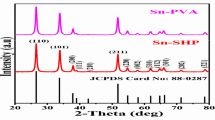Abstract
Due to the increased use of nanocomposites, mixing at nanoscale has become important. Current mixing techniques can be classified into: (a) dry mixing (mechanical mixing), (b) wet mixing, and (c) simultaneous production of mixed nanoparticles (when possible). Dry mixing is in general not effective in achieving desired mixing at nanoscale, whereas wet mixing suffers from different disadvantages like nanomaterial of interest should be insoluble, has to wet the liquid, and involves additional steps of filtration and drying. This paper examines the use of pressurized carbon dioxide having high density and low viscosity to replace the liquids (e.g., n-hexane, toluene). Ultrasound is applied to the suspension of nanopowders in gaseous and supercritical carbon dioxide where high impact collisions during sonication help mixing and the final mixture is obtained by simple depressurization. The method is tested for binary mixture of alumina/silica, silica/titania, MWNT (multiwalled carbon nanotubes)/silica, and MWNT/titania. The effects of sonication intensity and pressure on the degree of mixing are studied. Comparative study is also done with liquid n-hexane as a mixing media. Quantitative characterization (e.g., mean composition standard deviation, intensity of segregation) of mixing of alumina/silica and silica/titania is done with energy-dispersive X-ray spectroscopy, and that of MWNT/silica and MWNT/titania is done using field-emission scanning electron microscopy and day-light illumination spectrophotometry. Results show that mixing in carbon dioxide at higher ultrasound amplitudes is as good as in liquid n-hexane, and the final mixed product does not contain any residual media as in the case of liquid n-hexane.













Similar content being viewed by others
References
Barra J, Ulrich A, Falson-Reig F, Doelker E (2000) Color as an indicator of the organization and compactibility of binary powder mixes. Pharma Dev Tech 5(1):87–94
Danckwerts PW (1952) The definition and measurement of some characteristics of mixtures. Appl Sci Res A3:279–296
Froeschke S, Stefanie K, Weber AP, Kapser G (2003) Impact fragmentation of nanoparticles agglomerates. J Aerosol Sci 34:275–287
Goldstein J, Newbury D, Joy D, Lyman C, Echlin P, Lifshin E, Sawyer L, Michael J (2003) Scanning electron microscopy and X-ray microanalysis, 3rd edn. Springer Science+Business Media Inc., New York
Humphrey VF (2007) Ultrasound and matter-physical interactions. Prog Biophys Mol Biol 93:195–211
Kurkela JA, Brown DP, Raula J, Kauppinen EI (2006) New apparatus for studying powder deagglomeration. Powder Technol. doi:10.1016/j.powtec.2006.10.032
Lines MG (2007) Nanomaterials for practical functional uses. J Alloy Compd. doi:10.1016/j.jallcom.2006.02.082
Nam CH, Pfeffer R, Dave RN, Sundaresan S (2004) Aerated vibrofluidization of silica nanoparticles. AIChE J 50(8):1776–1785
Nobbs JH (1985) Kubelka-Munk theory and prediction of reflectance. Rev Prog Color Relat 15:66–75
Pope DG, Lach JL (1975) Some aspects of solid-state stability and diffuse reflectance spectroscopy. Pharma Acta Helv 50(6):165–177
Roco MC (1999) Nanoparticles and nanotechnology research. J Nanopart Res 1:1–6
Schatz EA (1968) Reflectance variables of compacted powders. In: Wendlandt WW (ed) Modern aspects of reflectance spectroscopy. Plenum, New York
Seipenbusch M, Toneva P, Peukert W, Weber AP (2007) Impact fragmentation of metal nanoparticles agglomerates. Part Part Syst Charact 24:193–200
Shah HS, Thaker AA (1990) Theoretical aids for the determination of colorimetric curves of binary powder mixtures. Appl Opt 29:1034–1039
Townsend RJ, Hill M, Harris NR, White NM (2004) Modelling of particle paths passing through an ultrasonic standing wave. Ultrasonics 42:319–324
Wei D, Dave R, Pfeffer R (2002) Mixing and characterization of nanosized powders: an assessment of different techniques. J Nanopart Res 4:21–41
Werth KH, Linsenbuhler M, Dammer SM, Frakas Z, Hinrichsen H, Wirth K-E, Wolf DE (2003) Agglomeration of charged nanopowders in suspensions. Powder Technol 133:106–112
Yang J, Wang Y, Dave RH, Pfeffer R (2003) Mixing of nano-particles by rapid expansion of high pressure suspensions. Adv Powder Technol 14(4):471–493
Acknowledgments
Authors RND and RBG gratefully acknowledge financial support from the National Science Foundation through NIRT Grant DMI-0506722 as well as a fellowship to JVS from an NSF Grant DMI-0441086. Partial support from EEC-0540855 to RND and AE is also acknowledged.
Author information
Authors and Affiliations
Corresponding author
Rights and permissions
About this article
Cite this article
Sanganwar, G.P., Gupta, R.B., Ermoline, A. et al. Environmentally benign nanomixing by sonication in high-pressure carbon dioxide. J Nanopart Res 11, 405–419 (2009). https://doi.org/10.1007/s11051-008-9394-z
Received:
Accepted:
Published:
Issue Date:
DOI: https://doi.org/10.1007/s11051-008-9394-z




